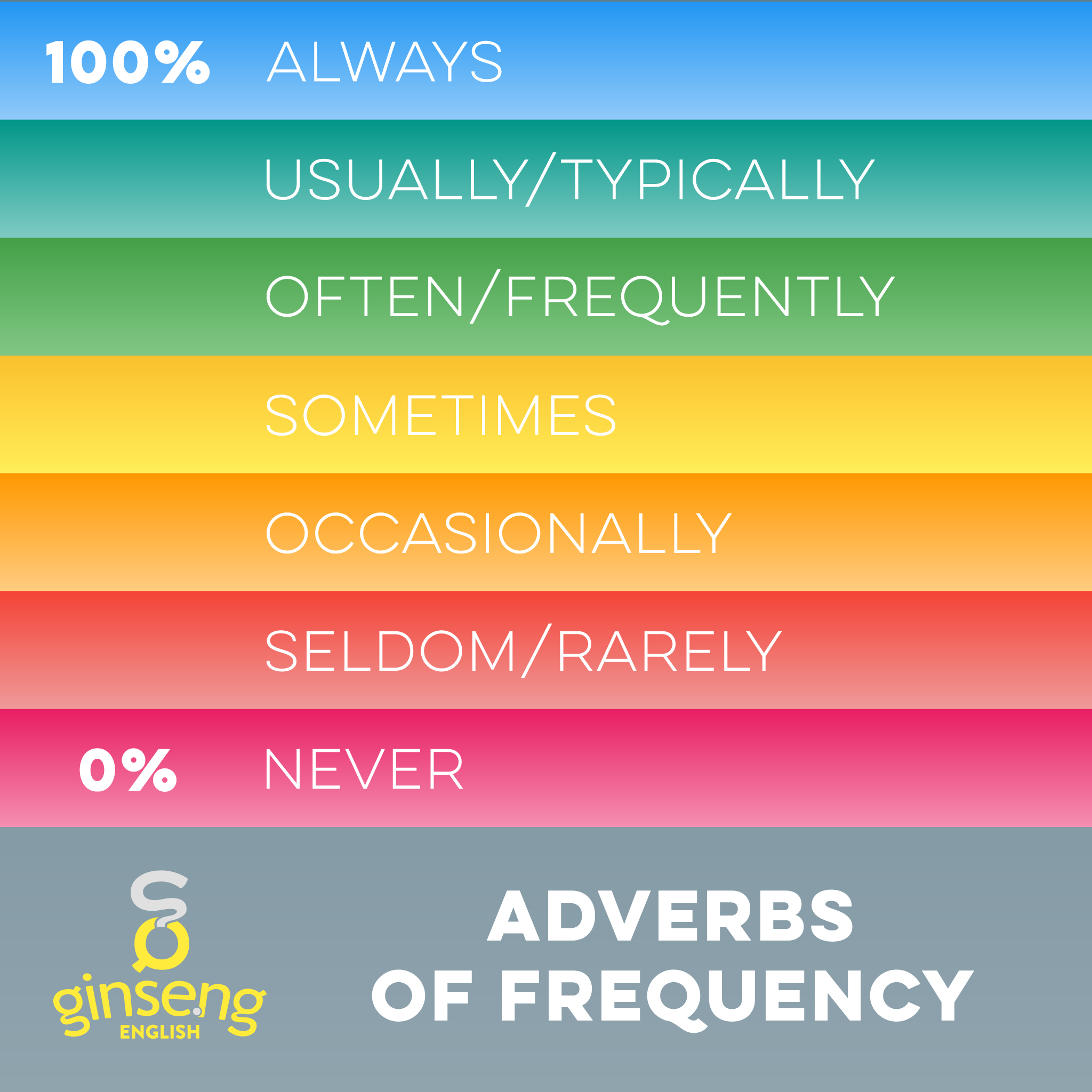What are Adverbs of Frequency?
Adverbs are an important part of speech in English. Just like adjectives describe nouns, adverbs are words that describe verbs. There are of course many different ways we can describe a verb. We can talk about how something happens, why it happens, when it happens. Adverbs of frequency tell us how often—or how frequently—an action happens.
The Most Common Adverbs of Frequency
Some of the most common adverbs of frequency are shown in the image. It is very common for teachers and textbooks to show adverbs of frequency with percentages next to them to explain their meaning; for example: 80% of the time = usually. Be careful. It is important to note that these can only be very rough estimates. It is more useful and accurate to say that usually is more than sometimes but less than always. The exceptions are always, which means 100% of the time, and never, which means 0% of the time.
Rules for using adverbs of frequency
Adverbs of frequency often describe habits, routines, and repeated actions, so they are frequently used with the simple present tense.
It is sometimes difficult to know where to put adverbs of frequency in a sentence. When describing a simple verb tense, with no auxiliary verbs, adverbs of frequency generally come between the subject and the verb. Look at these examples:
We never travel in the fall.
Lydia generally takes the train to work.
They sometimes have wine with dinner.
The exception to this rule is when the main verb in the sentence is to be. If the sentence is a subject + BE + noun or subject + BE + adjective sentence, put the adverb of frequency after be.
Munir is always late.
This is never a good sign.
We are usually the first ones in line.
The adverbs often, sometimes, generally, frequently, usually, and typically can go at the beginning of a sentence, as you can see here:
Generally Lydia takes the train to work.
Sometimes they have wine with dinner.
Usually we are the first ones in line.
Note that no comma is necessary when an adverb of frequency starts a sentence.
It is also possible to put these same adverbs at the end of a sentence, though this is more common in spoken English than in writing:
Lydia takes the train to work generally
They have wine with dinner sometimes
We are the first ones in line usually
Chart Showing Common Adverbs of Frequency

